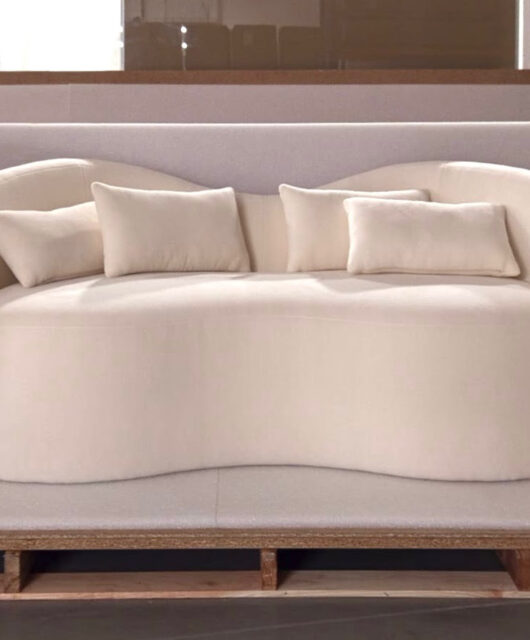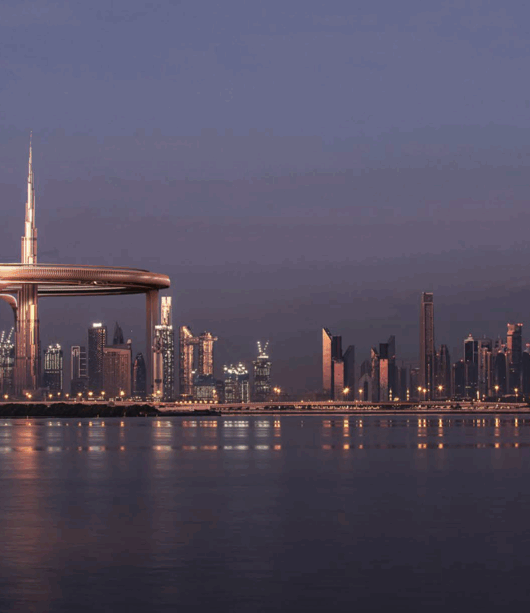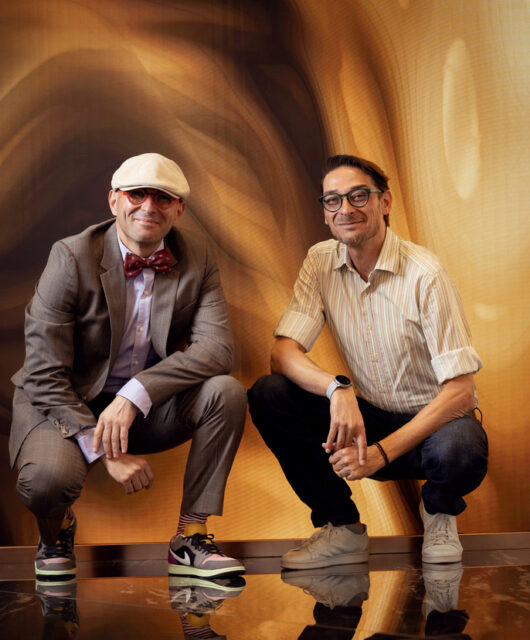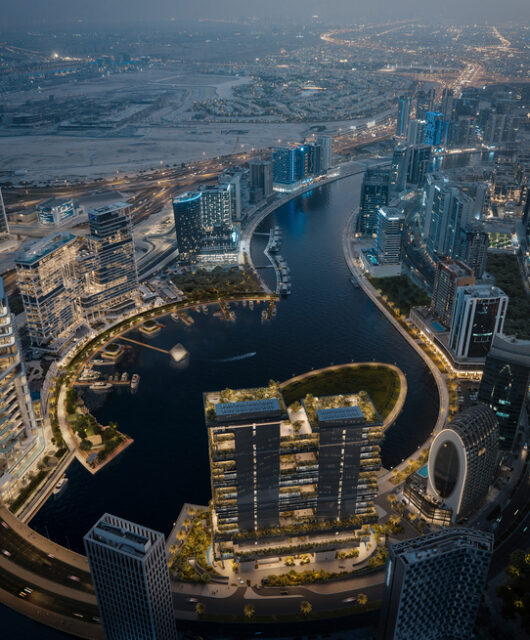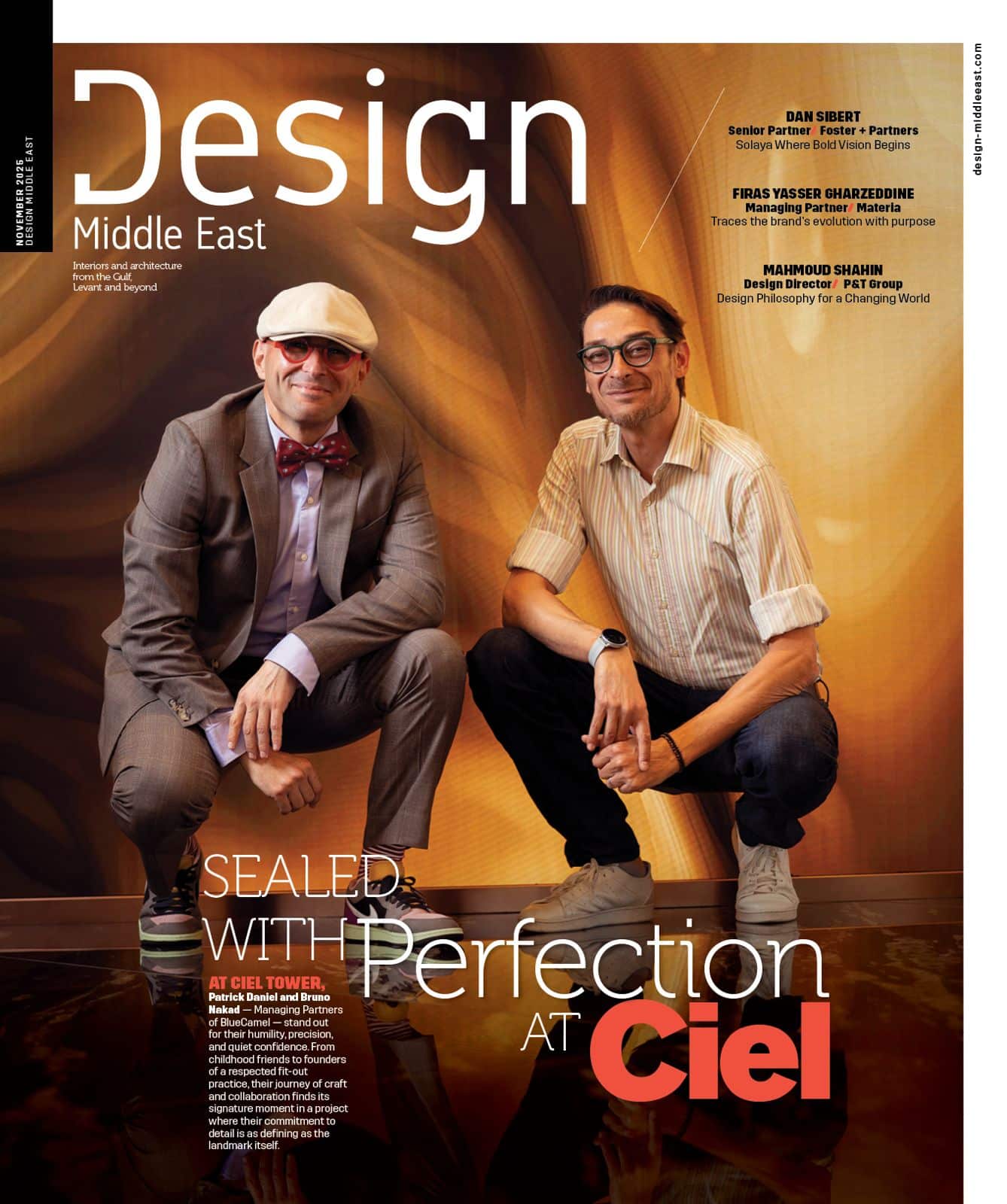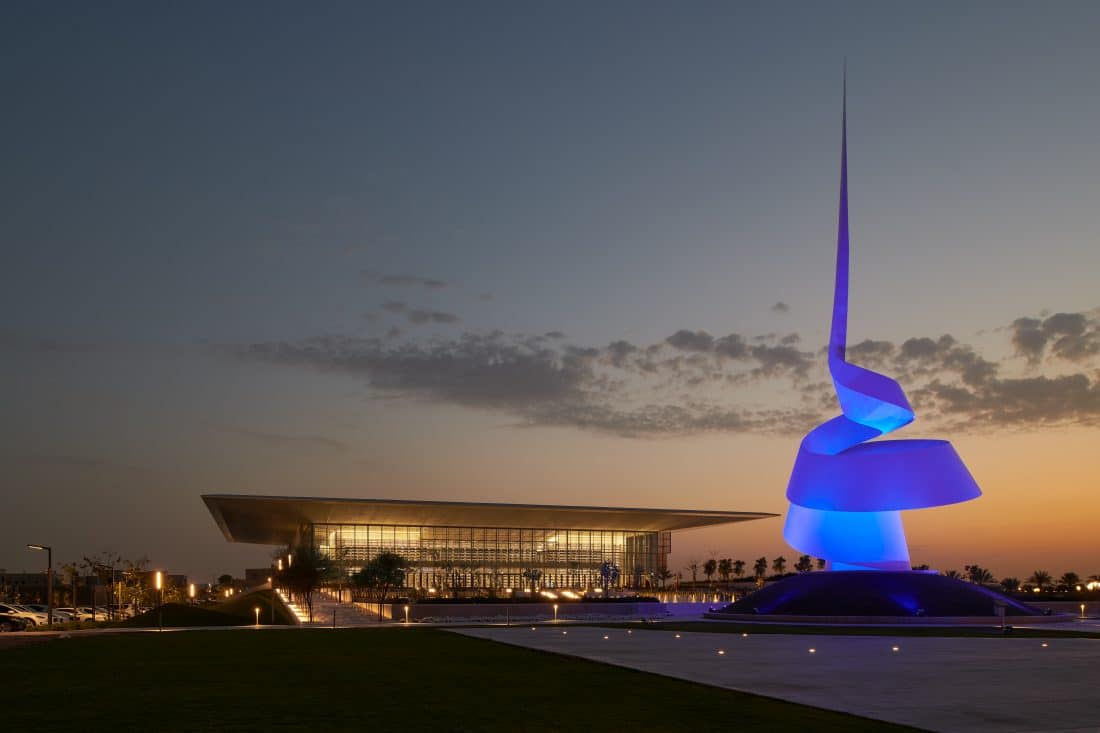
Can you describe the composition of the building?
The building is approximately 100 x 100 metre with a central courtyard space. Compact meeting rooms surround this courtyard, with the majority of the building laid out as four distinct quadrants. To the West is the main double height entrance, that can also host larger exhibitions and events. The main book library and research part of the building is set over two floors towards the South of the building. The Eastern quadrant contains a flexible auditorium on the ground floor and a gallery space at the upper floor. The children’s library and play area with an adjacent café space is towards the north, set over two levels. Both the north and south facades open onto landscaped garden spaces, which become learning and teaching elements in their own right.
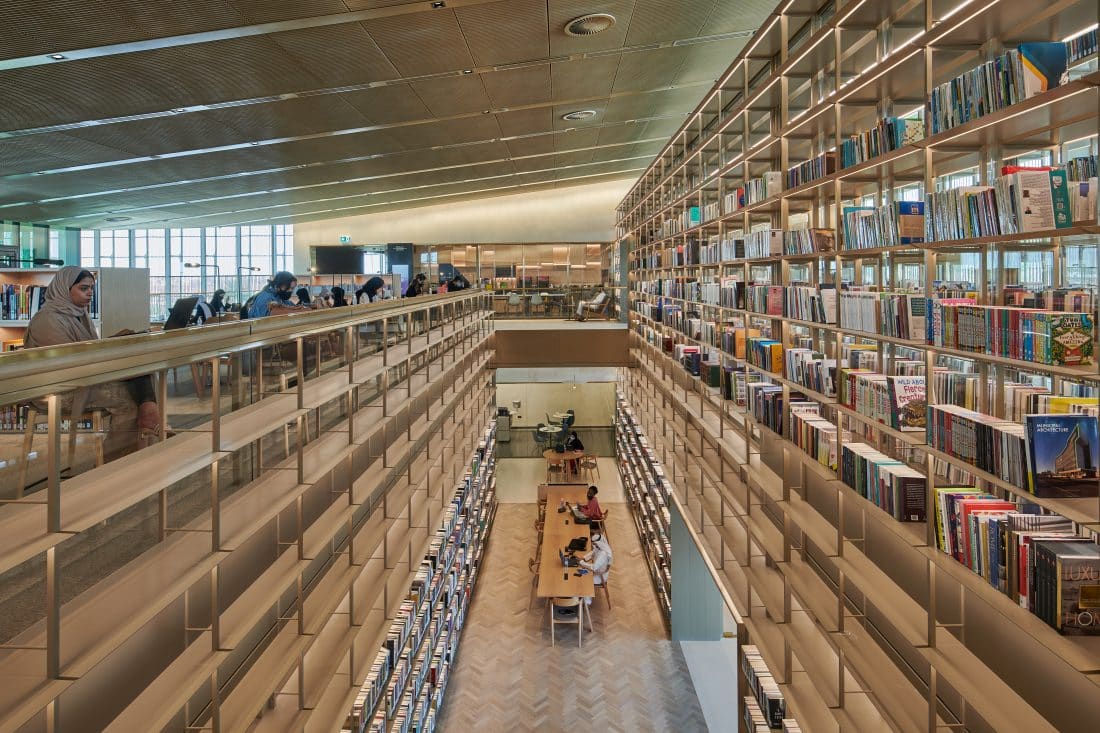
We wanted to preserve the visual connection between the indoor and the outdoors but were very aware of the need to keep the sun out, given the local climate. We ran several digital simulations to chart the movement of the sun throughout the day and to analyse how we could mitigate it while maintaining views out to the landscape. The large overhanging roof shades the building from the harsh sun for the majority of the day, while the late afternoon and morning sun is kept out using fixed and moveable shades. The moveable screens allow people to moderate their local environment by adjusting the amount of light that illuminates the space that they occupy. This allows them to create a personalised environment for focussed work.
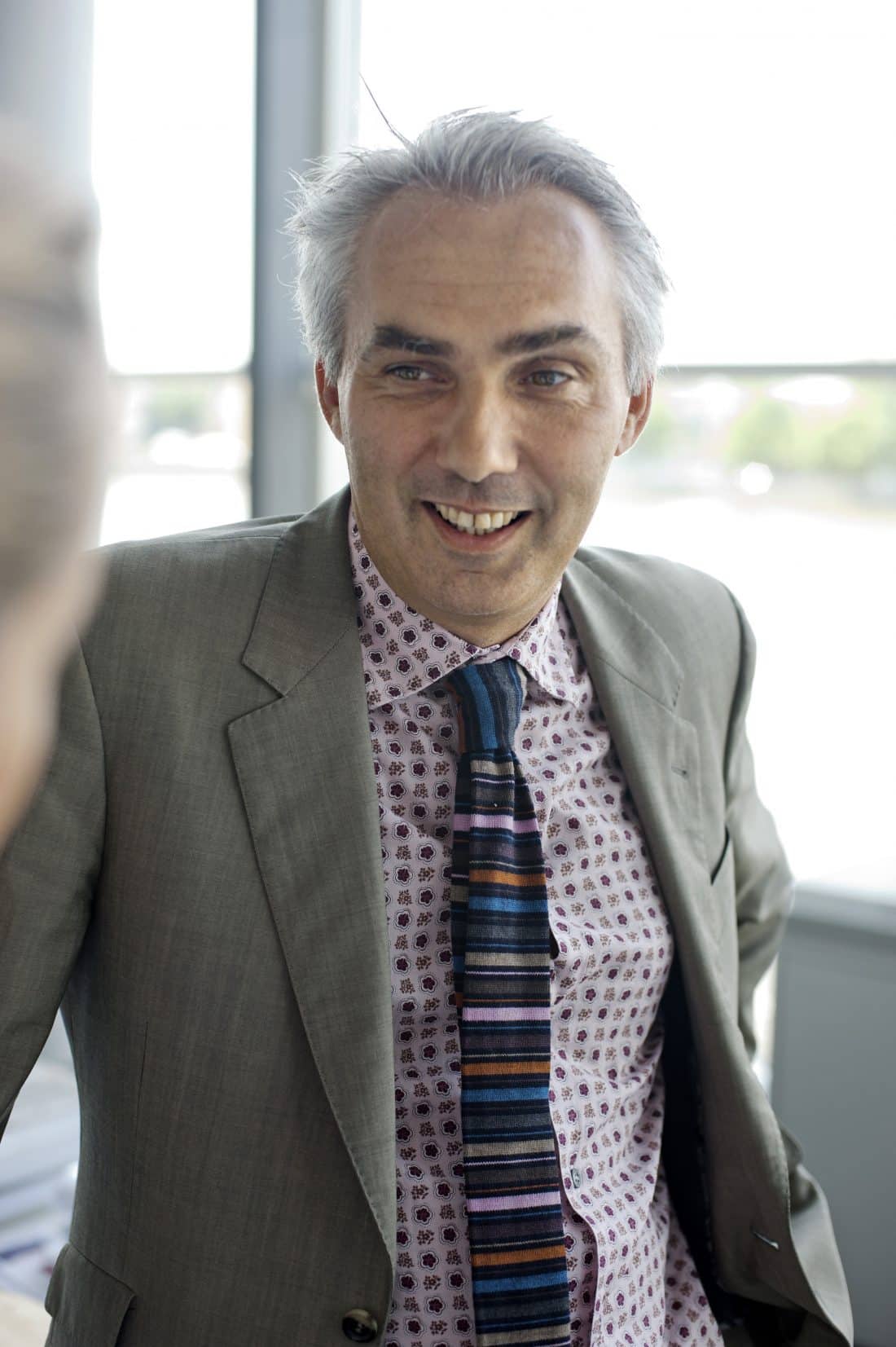
What else do you think is important for a public library design?
Long considered primarily as repositories for books and periodicals, the role of libraries in the life of contemporary communities has changed dramatically. The team visited libraries around the world to understand best practice. We found that the most successful spaces allowed for people to use the building through an extended period – a 24/7 community space that belonged to them. Alongside the libraries, there were spaces for talks and lectures, larger social areas, cafes for food and drink, child-friendly spaces – all functions that encourage people to come together. We planned the House of Wisdom by plotting many ‘day in the life scenarios’ of different potential user groups including students, senior citizens, young mothers, school parties, evening class groups, and authors, evaluating their needs clarifying our approach at every step.
Could you tell us a bit more about the Scroll sculpture in the outdoor area?
The scroll was designed by Gerry Judah to commemorate Sharjah as the UNESCO 2020 World Book Capital. It creates a fantastic dialogue with the House of Wisdom and its landscaped gardens and water features, which connect the two together. We hope it encourages people to explore the outdoor landscape as well, which have been specifically designed to complement the building’s programme.
And how has this building adapted to digital technologies?
The House of Wisdom is respectful of its history, but very much looks forward to the future. Knowledge comes a multitude of different avenues – online sources, lectures, exhibits, play and practical experimentation, explorations with nature, and books. We wanted to try and assimilate all of these opportunities into one building with collaboration and openness sits at its heart.
We had some great conversations with the client early on in the process about how information on how to build 3d rapid prototypes of artefacts was freely available from museum across the world and how that was changing the way knowledge was being shared. This led to use creating a small ‘lab’ space that integrates prototyping facilities as well as an ‘Expresso book machine’ that allows out of print books to be downloaded and reproduced, or for authors to print and publish limited numbers of their books.
What was the most challenging part of this project?
It was an exciting challenge from the outset – to create a library for the future, one that would allow people to gather, learn and exchange ideas. The project was initially referred to as the Digital Library but through our research we found many parallels with the original House of Wisdom, which was set up in Persia in the 4th century as a place for scholars to exchange ideas. We had some great conversations with the client, HRH Sheikah Boudour and her team, about how the aims of the building had many parallels with one of the world’s earliest scholarly institutions, which informed the design process.
What does sustainability mean to you, and what steps have you taken in this project to make it a reality?
Sustainability is at the heart of our design approach. Every project we undertake is underpinned by an abiding concern towards the natural environment. The shading strategy at the House of Wisdom is a key part in the sustainability story. One of the first questions we asked ourselves was – how do we maintain good natural light and environment without allowing too much sun and heat into the building? We wanted to do this by passive means where possible, which inspired the idea of the large overhanging roof that shelters the building during the hottest parts of the day. Fixed external screens are used to prevent the sun from entering the building in the mornings and evenings with a final layer of internal BMS controlled blinds to prevent any glare. Manually operated screens allow the occupiers to personally manage light levels to their comfort. The façade and structure were designed to have a very low thermal mass to allow the building to respond quickly to temperature changes. The large flat roof has been designed to incorporate the potential for photovoltaic panels to be installed in the future.
We also wanted to extend time during the year when we could keep the building cool using only natural ventilation. We visited the Heart of Sharjah project and saw how some spaces around the small, shaded courtyards there remained open in even as the temperatures rose. Shade and ventilation were crucial to our strategy at the House of Wisdom, where the central courtyard is open to sky and the perimeter doors open, drawing air through the courtyard to cool the entire building.
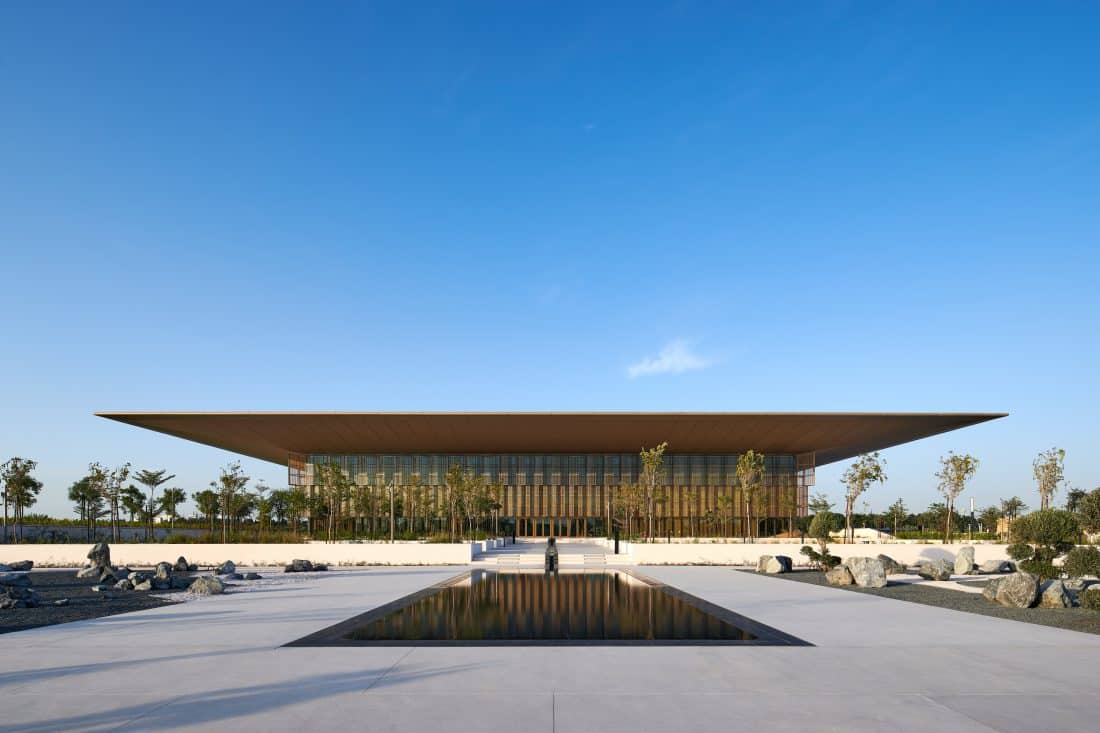
Every project is a learning experience that informs our work in the future. However, this project has been a great opportunity to explore the possibilities of new technologies such as rapid prototyping, which is a burgeoning industry that is beginning to have a positive impact on construction industry. Using cutting edge CNC technology, we designed the timber and aluminium screens that provide shade throughout the building. This approach allowed us to use mass production technology to create screens with no waste, which is pivotal in terms of sustainability. We think this is an approach that has great promise for the future.
How has COVID-19 influenced your approach to building design?
If there is one thing we have learned during the pandemic, it is to embrace flexibility and adaptability. The future is essentially unknown, so it is vital that we design buildings and spaces that can respond to the needs of the hour. This is in addition to the increasingly vital focus on well-being and sustainability that are crucial for the planet’s survival.

